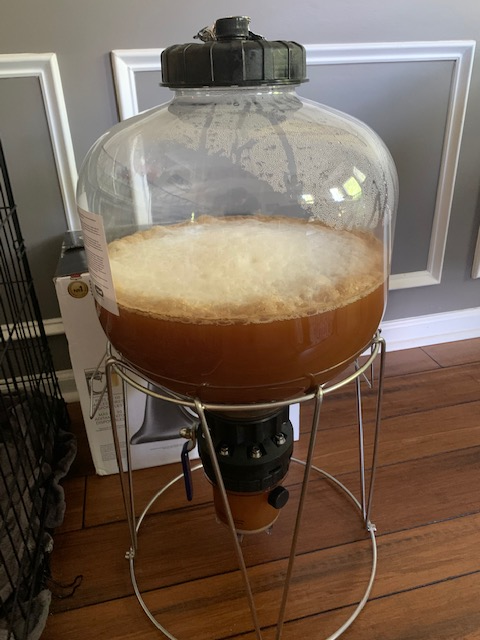First, I don't see any major issues, so let's break down your concerns...
1) I added the malt extract at 150F, not realizing it had to be 212F. So at that point, I increased temp up to 212F with malt extract and water.
LME does not have to be added at 212F. As long as it isn't allowed to scorch on the bottom before mixing, it's fine.
2) When I took my yeast starter out of the fridge, i poured off the top (and might have poured off some of the yeast? unknown honestly. If i did it was only a little bit
If it was only a little bit, I wouldn't lose any sleep over it.
3) My OG was about 1.04/1.05.. The recipe says it should have been 1.067. I was wondering.. could that even be due to the specific type of malt extract I used?
I popped your recipe into BrewCipher and got a post-boil OG of 1.055. I don't know why your recipe said 1.067, but I can think of two possibilities...
A) The recipe was for
Dry Malt Extract (not Liquid)
B) The OG included the impact of the later addition of Honey (if honey was part of the recipe)
Also, since BrewCipher computed 1.055 (for LME), and you seem to have got something between 1.040 and 1.050 (?), any of the following could account for that...
- You ended up with more than the intended volume of wort (topped off too much).
- The top-off water and the wort weren't mixed thoroughly before taking the hydrometer sample.
<--- very common beginner issue
- Measurement error (bad hydrometer or mis-read)
4) Chilling from 212F to 66F was initially easy then got hard. I got to 80F no problem. Getting from 80F to 66F-ish involved me putting the wort into the fridge for some time to have it cool. When the wort was done to when I pitched the yeast was probably ~3 hours.
If your wort and kettle were sanitary, there's nothing to worry about here. A couple ways to improve chilling time:
- Assuming you were using an immersion chiller: When you chill with groundwater (or any water), the rate of chilling starts off very fast and slows down more and more as you get closer and closer to the temperature of the water. When my water is warm-ish, I chill until the rate of chilling slows significantly, and then I use a cheap pond pump to recirculate ice water through the chiller, which makes that last stretch go very quickly.
- Assuming you were using a stationary "ice water bath": consider getting an immersion chiller.
I'm wondering if since my OG was lower than expected, I should add some honey (maybe 0.5 lb) to the fermenter tomorrow, to attempt to give the yeast more to chew on, then add another ~1lb 2-3 days from now, to give the beer more flavor.
So, if the original recipe's predicted OG included honey that hasn't been added, just add that at high krausen. With your batch size, a pound of honey should raise the OG by about 10 points, from (say) 1.055 to about 1.065.



